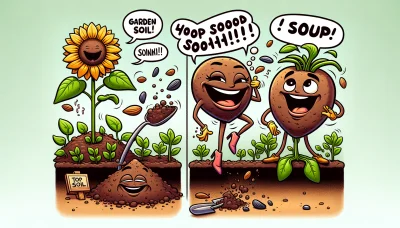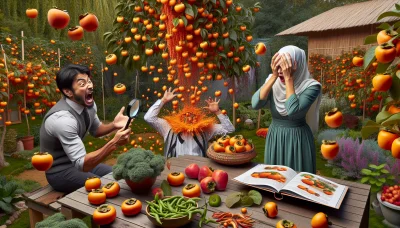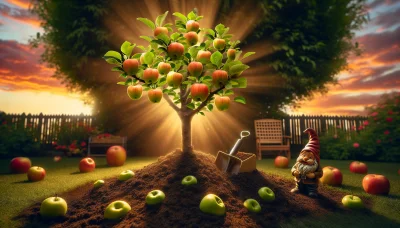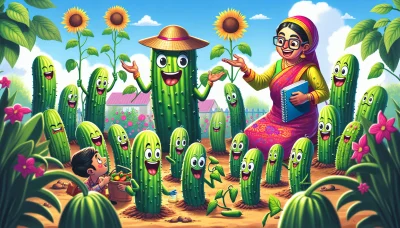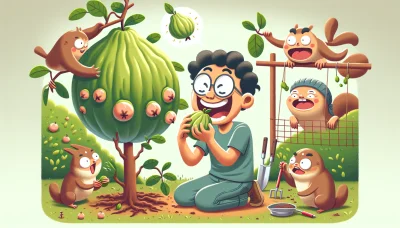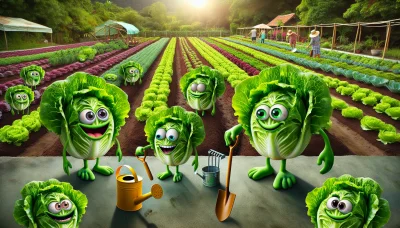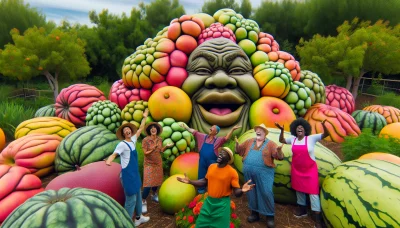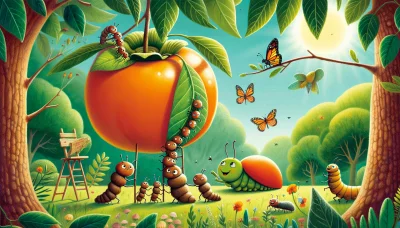Salvia nemorosa may night Quiz
Test Your Knowledge
Question of
Introduction to Salvia Nemorosa 'May Night'
Salvia Nemorosa 'May Night', also known as the Woodland Sage 'May Night', is a perennial favorite among gardeners for its striking deep violet-blue flower spikes and robust, easy-care nature. This award-winning plant boasts a long blooming season, typically from late spring through summer, offering a vibrant display of color when many other perennials are just beginning to fade. Its aromatic foliage adds to its appeal, making it a great choice for both ornamental and herb gardens. 'May Night' thrives in full sun to partial shade and is well-suited to a variety of soil types, though it prefers well-drained conditions. Its drought-resistant qualities and ability to attract pollinators like bees and butterflies make it an environmentally friendly and visually appealing addition to any garden space.
How to Plant Salvia Nemorosa 'May Night'
- Choose the Right Time: Plant Salvia Nemorosa 'May Night' in early spring after the last frost, or in early fall before the ground freezes.
- Select a Suitable Location: Pick a spot that receives full sun to partial shade. Salvia Nemorosa 'May Night' thrives in areas that get at least 6 to 8 hours of sunlight daily.
- Prepare the Soil: This plant prefers well-drained soil. Amend heavy clay soil with compost or other organic matter to improve drainage. The ideal soil pH should be between 6.0 and 7.0.
- Spacing: Space plants about 18 to 24 inches apart. This allows enough room for growth and air circulation, which can help prevent disease.
- Dig a Hole: Make a hole that is twice as wide and the same depth as the root ball of your Salvia Nemorosa 'May Night' plant.
- Planting: Remove the plant from its container and gently loosen the roots. Place the plant in the hole, making sure the top of the root ball is level with the soil surface. Fill in around the plant with soil and press firmly to remove air pockets.
- Water Thoroughly: After planting, water your Salvia Nemorosa 'May Night' deeply to help establish roots. Ensure the soil is moist but not waterlogged.
- Mulch: Apply a layer of mulch around the base of the plant to retain moisture, regulate soil temperature, and reduce weed growth.
- Follow-Up Care: Keep the soil consistently moist during the first growing season. Once established, Salvia Nemorosa 'May Night' is drought tolerant. Deadhead spent blooms to encourage more flowers.
Caring for Your Salvia Nemorosa 'May Night'
The Salvia Nemorosa 'May Night', also known as the Woodland Sage, is a beautiful and resilient perennial plant that thrives with the right care. To ensure your 'May Night' grows healthy and vibrant, it's essential to provide it with adequate watering, sunlight, and soil conditions. This plant prefers well-drained soil and should be watered regularly, especially during dry spells, to maintain moist but not waterlogged soil. It flourishes in full sun but can tolerate partial shade, especially in hotter climates. For optimal growth, plant your Salvia Nemorosa 'May Night' in a location where it can enjoy at least six hours of sunlight daily.
Common Pests and Diseases
- Slugs and Snails: These pests are attracted to the moisture around the plants and can be managed by setting up traps or using organic pellets to deter them.
- Powdery Mildew: This fungal disease appears as a white powdery substance on leaves. It can be prevented by ensuring good air circulation around the plants and treated with fungicidal sprays if necessary.
- Root Rot: Caused by overly wet soil conditions, root rot can be prevented by ensuring your Salvia Nemorosa 'May Night' is planted in well-draining soil and not overwatered.
- Aphids: These small pests can be controlled by spraying the plants with water to knock them off or using insecticidal soap.
Pruning and Maintenance Tips for Salvia Nemorosa 'May Night'
Pruning and maintenance are crucial for the health and aesthetic appeal of Salvia Nemorosa 'May Night'. Proper care encourages vigorous growth, enhances flowering, and prevents diseases. By understanding the specific needs of this plant, gardeners can ensure it thrives and brings beauty to their outdoor spaces year after year.
- Prune early in the spring to remove any dead or damaged stems, which helps to stimulate new growth.
- After the first bloom in late spring or early summer, cut the plant back by one-third to encourage a second bloom period.
- Deadhead regularly during the flowering season to promote continuous blooming and prevent the plant from becoming leggy.
- In late fall, after flowering has finished, cut the plant back to the ground to prepare it for winter and encourage healthy growth in the spring.
- Apply a light layer of mulch after fall pruning to protect the roots during cold weather.
Companion Plants for Salvia Nemorosa 'May Night'
Companion planting is a gardening practice that enhances the growth, health, and yield of plants through beneficial interactions. By pairing certain plants together, gardeners can naturally repel pests, improve pollination, and utilize space efficiently. For Salvia Nemorosa 'May Night', choosing the right companions can highlight its striking deep purple blooms and extend the flowering season in your garden.
- Russian Sage (Perovskia atriplicifolia) - Its silvery foliage and lavender-blue flowers complement the deep purple of 'May Night', and it thrives in similar conditions of full sun and well-drained soil.
- Shasta Daisy (Leucanthemum x superbum) - The bright white flowers of Shasta Daisy contrast beautifully with the dark hues of 'May Night', creating a visually appealing display.
- Lavender (Lavandula) - Lavender shares similar growing requirements and its soft purple blooms alongside 'May Night' extend the bloom color palette in the garden.
- Catmint (Nepeta) - With its long blooming period and lavender-blue flowers, Catmint pairs well with 'May Night', and both are loved by bees and butterflies, enhancing pollination.
- Ornamental Grasses - Grasses like Switchgrass (Panicum virgatum) or Fountain Grass (Pennisetum) add texture and movement to the garden, contrasting nicely with the upright habit of 'May Night'.
Design Ideas with Salvia Nemorosa 'May Night'
Salvia Nemorosa 'May Night', with its stunning deep purple blooms, offers a versatile option for gardeners looking to add vibrant color and texture to their landscapes. This perennial is not only beautiful but also drought-tolerant and attractive to pollinators, making it a practical choice for a variety of garden designs. Here are some creative ways to incorporate 'May Night' into your garden:
- Borders: Use 'May Night' along walkways or garden borders for a striking edge. Its height and color contrast beautifully with green foliage plants.
- Mass Plantings: For a dramatic effect, plant 'May Night' in large groups. This creates a sea of deep purple that truly captures the eye, especially when swaying in the breeze.
- Container Gardening: 'May Night' is also suitable for containers, making it a great choice for patios or balconies. Pair it with lighter colored flowers or foliage to make its colors pop.
- Cottage Gardens: Incorporate 'May Night' into a cottage garden design for a touch of traditional charm. Its tall spikes blend well with other perennials and annuals, creating a layered, textured look.
- Wildlife Gardens: If you're looking to attract bees, butterflies, and other pollinators, 'May Night' is an excellent choice. Its flowers provide a valuable nectar source throughout the summer months.
Frequently Asked Questions About Salvia Nemorosa 'May Night'
| Question | Answer |
|---|---|
| When does Salvia Nemorosa 'May Night' bloom? | It typically blooms from late spring to early summer, with possible reblooms until fall if spent flowers are removed. |
| What is the height and spread of Salvia Nemorosa 'May Night'? | It can grow to be about 18 to 24 inches tall and 18 to 24 inches wide. |
| What are the hardiness zones for Salvia Nemorosa 'May Night'? | It is hardy in USDA zones 4 through 8. |
| How much sun does Salvia Nemorosa 'May Night' require? | It thrives in full sun but can tolerate partial shade. |
| What type of soil is best for Salvia Nemorosa 'May Night'? | Well-drained soil is ideal for this plant. |
| Is Salvia Nemorosa 'May Night' drought tolerant? | Yes, once established, it is quite drought tolerant. |
| Does Salvia Nemorosa 'May Night' attract wildlife? | Yes, it is known to attract bees, butterflies, and other pollinators. |

